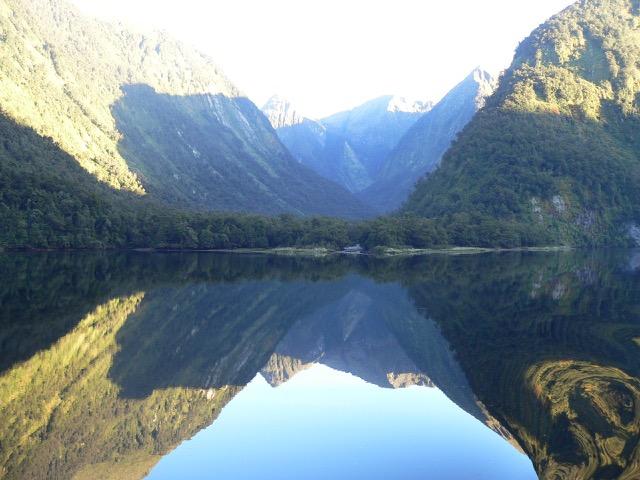Fjords are 'hotspots' in global carbon cycling

While fjords are celebrated for their beauty, these ecosystems are also major carbon sinks that likely play an important role in the regulation of the planet's climate, new research reveals. Credit: Candida Savage
After studying sediment data from worldwide fjord systems, the researchers, who include Dr Candida Savage of New Zealand's University of Otago, estimate that about 18 million tonnes of organic carbon (OC) is buried in fjords each year, equivalent to 11% of annual marine carbon burial globally.
Dr Savage and colleagues calculated that per unit area, fjord organic carbon burial rates are twice as large as the ocean average.
“Therefore, even though they account for only 0.1% of the surface area of oceans globally, fjords act as hotspots for organic carbon burial,” Dr Savage says.
Fjords are long, deep and narrow estuaries formed at high latitudes during glacial periods as advancing glaciers incise major valleys near the coast. They are found in North Western Europe, Greenland, North America, New Zealand, and Antarctica.
As deep and often low oxygen marine environments, fjords provide stable sites for carbon-rich sediments to accumulate, Dr Savage says.
Carbon burial is an important natural process that provides the largest carbon sink on the planet and influences atmospheric carbon dioxide (CO2) levels at multi-thousand-year time scales.
In the Nature Geoscience article, the researchers suggest that fjords may play an especially important role as a driver of atmospheric CO2 levels during times when ice sheets are advancing or retreating.
The Earth is currently in an interglacial period after ice sheets receded around 11,700 years ago.
During glacial retreats, fjords would trap and prevent large volumes of organic carbon flowing out to the continental shelf, where chemical processes would have caused CO2 to be produced, says Dr Savage.
Once glaciers started advancing again this material would likely then be pushed out onto the shelf and CO2 production would increase.
“In essence, fjords appear to act as a major temporary storage site for organic carbon in between glacial periods. This finding has important implications for improving our understanding of global carbon cycling and climate change,” she says.
The research involved fieldwork in Fiordland and analysing data from 573 surface sediment samples and 124 sediment cores from fjords around the world.
Media Contact
All latest news from the category: Earth Sciences
Earth Sciences (also referred to as Geosciences), which deals with basic issues surrounding our planet, plays a vital role in the area of energy and raw materials supply.
Earth Sciences comprises subjects such as geology, geography, geological informatics, paleontology, mineralogy, petrography, crystallography, geophysics, geodesy, glaciology, cartography, photogrammetry, meteorology and seismology, early-warning systems, earthquake research and polar research.
Newest articles

NASA: Mystery of life’s handedness deepens
The mystery of why life uses molecules with specific orientations has deepened with a NASA-funded discovery that RNA — a key molecule thought to have potentially held the instructions for…

What are the effects of historic lithium mining on water quality?
Study reveals low levels of common contaminants but high levels of other elements in waters associated with an abandoned lithium mine. Lithium ore and mining waste from a historic lithium…

Quantum-inspired design boosts efficiency of heat-to-electricity conversion
Rice engineers take unconventional route to improving thermophotovoltaic systems. Researchers at Rice University have found a new way to improve a key element of thermophotovoltaic (TPV) systems, which convert heat…



